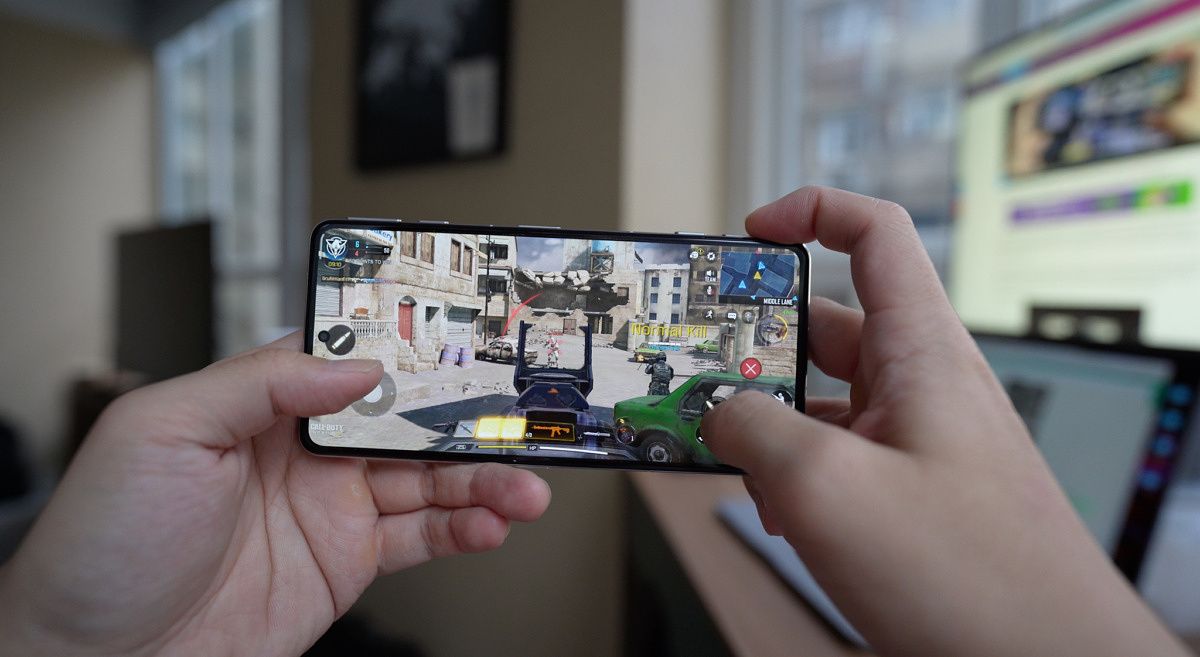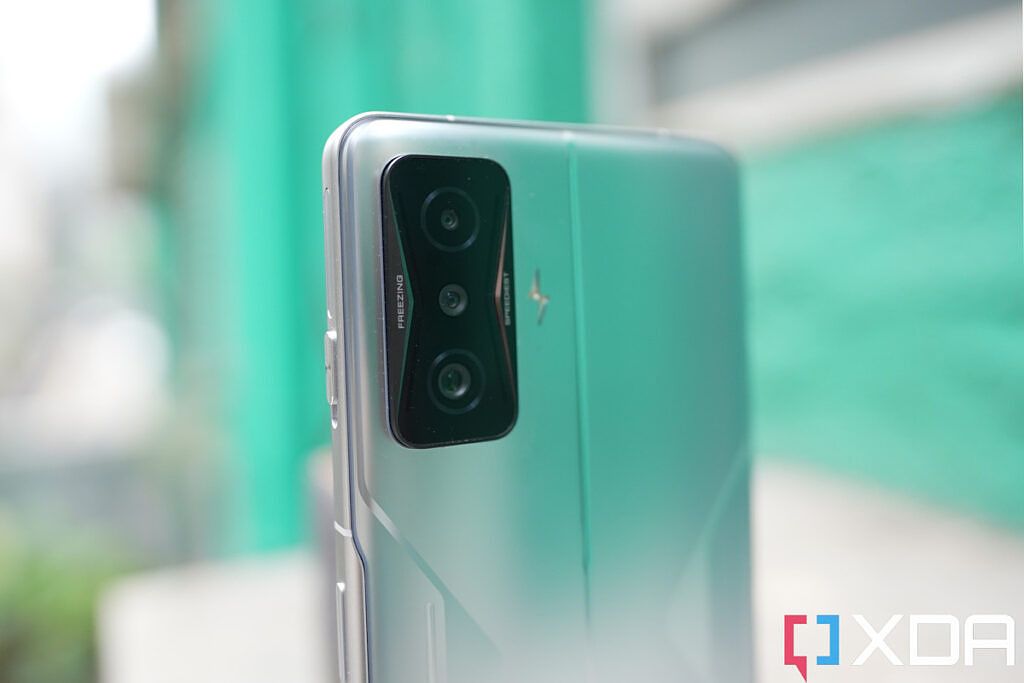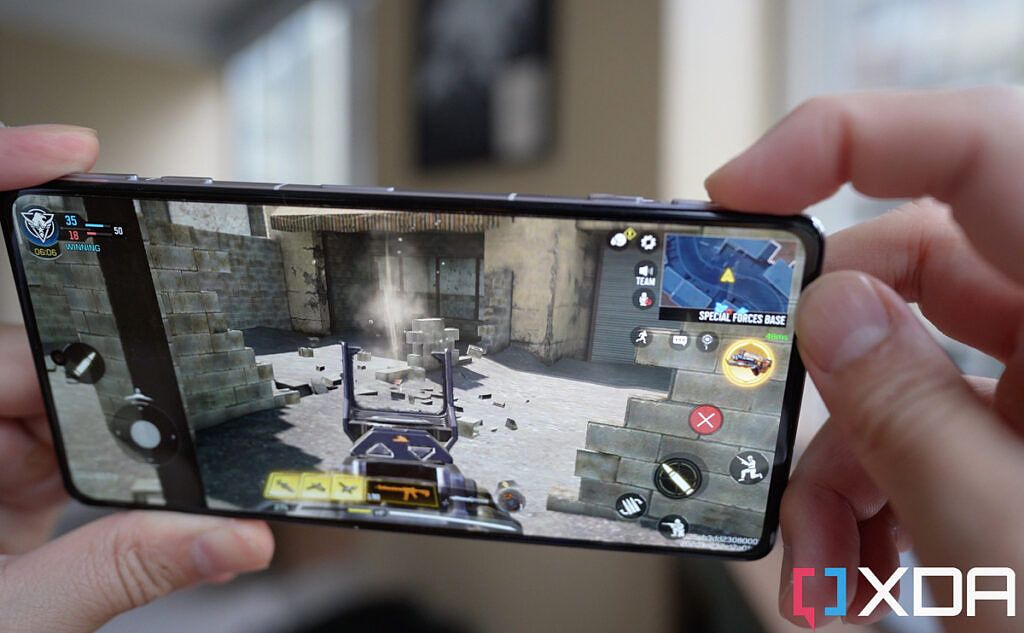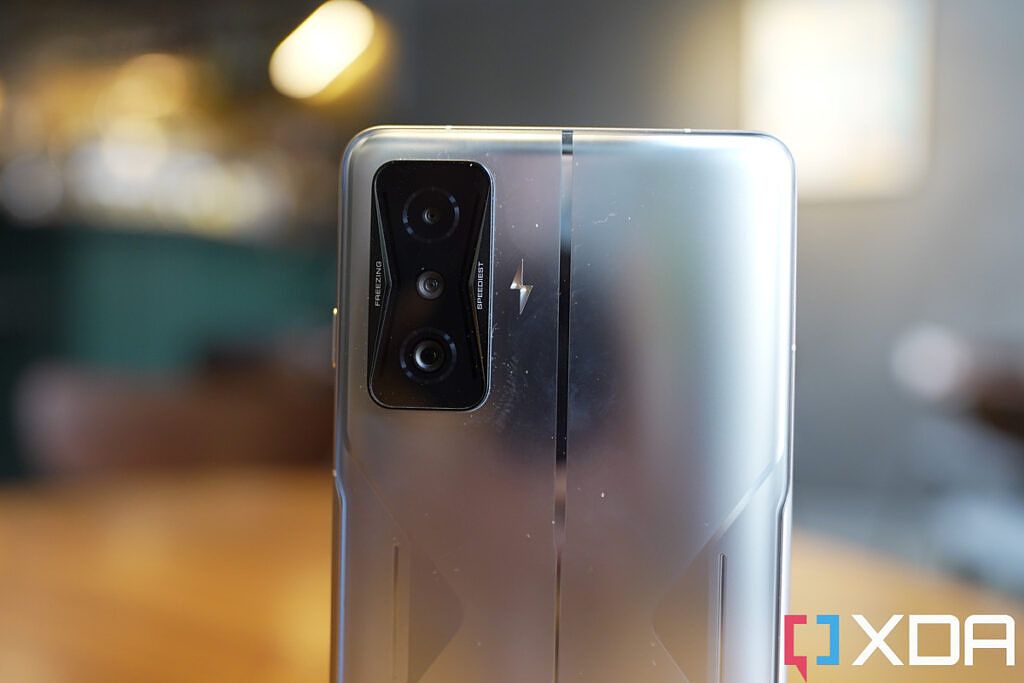I used to think gaming phones were gimmicks. I'm not talking about the initial batch of pre-iPhone era devices like the Nokia N-Gage or Gizmondo, nor early 2010s-era devices from Sony and Samsung with slide-out controllers. Those devices actually brought something new and different to the mobile market. I am instead referring to the recent gaming phone resurgence that began four, five years ago led by the likes of Razer, ASUS, Honor, and Nubia, to name a few.
My main gripe was that, other than adding an LED light strip on the back of the phone and supposedly superior copper cooling in the internals, those first batch of gaming phones mostly operated just like any other Android phone on the market. I still remember testing the Honor Play in 2018 and having to ask the company exactly how the phone differed from the six other Huawei/Honor devices I had tested that year.
But gaming phones began justifying their existence in the past couple of years with actual meaningful additions like a physical fan, controller accessories, or my favorite, shoulder buttons, which instantly made a phone more suitable for gaming. Most of these shoulder buttons have been in the capacitive sensor variety, but Xiaomi has offered actual pop-up buttons that provide real tactile, clicky feedback in a few devices now. The latest one is the POCO F4 GT.
The POCO F4 GT is not exactly an all-new device. If you follow the Chinese smartphone scene closely, or if you're just familiar with Xiaomi's tendency to rebrand an existing mid-tier phone for another market, you will know that the POCO F4 GT is the exact same device as the Redmi K50G (the G stands for gaming) that launched in China two months ago. I don't think most people would mind the rebrand, because you're getting a lot of flagship components at a very reasonable price.

POCO F4 GT
The POCO F4 GT's pop-up shoulder buttons and excellent speakers truly add to the mobile gaming experience. Even if you don't game, the F4 GT is still a solid all around phone.
POCO F4 GT: Pricing and Availability
The POCO F4 GT comes in two configurations: 8GB RAM+128GB ROM and 12GB RAM + 256GB ROM, priced respectively at €599 ($639) and €699 ($746) in Europe, and roughly equivalent in Asian regions like Hong Kong and Southeast Asia. But if you order the phone between April 27 to May 7, POCO is offering an early bird discount that shaves €100 off each price, meaning the base 8GB+128GB variant can be had for €499 ($532).
The POCO F4 GT will be on sale at POCO's online store, as well as online retailers such as Amazon, Lazada, AliExpress, Shopee, among others.
POCO F4 GT: Specifications
|
Specification |
POCO F4 GT |
|---|---|
|
Build |
|
|
Dimensions & Weight |
|
|
Display |
|
|
SoC |
|
|
RAM & Storage |
|
|
Battery & Charging |
|
|
Security |
|
|
Rear Camera(s) |
|
|
Front Camera(s) |
20MP, f/2.4 |
|
Port(s) |
USB Type-C |
|
Audio |
|
|
Connectivity |
|
|
Software |
MIUI 13 for POCO based on Android 12 |
|
Other Features |
|
About this hands-On: Xiaomi Global provided me with a review unit of the POCO F4 GT for testing. Xiaomi did not have any input in this article.
POCO F4 GT: Hardware and Design
If you've seen the Redmi K50G, then the POCO F4 GT won't bring any surprises. The design is identical, with the only visual difference being the branding that has changed from Redmi to POCO in the lower-left corner of the device. My unit is the "Knight Silver" color and I quite like how it looks and feels (I prefer it over the yellow and black colorways). The glass back is a bit reflective and not entirely matte, however, and it can attract subtle fingerprints.
There's a bit of texture in the two inward-pointing arrows ("> <") as they're ever so slightly raised above the glass. Since this is a gaming phone, there of course is an LED light strip. There are two of them present, also forming inward-pointing arrows in the camera module. Another nice touch is the LED flashlight in the shape of lightning sitting next to the camera module.
As a gaming phone, the POCO F4 GT needs to offer better visual and audio experiences than usual, and the phone knocks it out of the park in the speakers department
As a gaming phone, the POCO F4 GT needs to offer better visual and audio experiences than usual, and the phone knocks it out of the park in the speaker department: there's a quad-speaker system consisting of two speakers and two tweeters, housed inside large speaker grills at the top and bottom of the device. The grills are noticeably larger and deeper than usual, allowing for more room for the sound to disperse. They are also symmetrical in placement and size. I can definitely hear fuller audio. However, there is no headphone jack.
As for the 6.7-inch, 2400 x 1080 OLED display, it's sharp and vibrant enough, but the 800 nits of brightness is a bit lacking, and the refresh rate can only be either 60Hz or 120Hz, but it's got a touch sampling rate up to 480Hz and is covered by Gorilla Glass Victus.
Magnetic Pop-Up Triggers
The two shoulder buttons are called "magnetic pop-up triggers," and by default they stay recessed, only popping up when you physically flip a switch. The buttons offer very clicky, bouncy feedback, and can be used outside of gaming for launching specific apps or phone functions like a flashlight (customizable in Settings). The switch to release the buttons, however, is a bit loose and can be accidentally toggled on or off when pulling the phone in and out of the pocket. I wish they were more firm. POCO claims the buttons have been tested to withstand at least 1.5 million times.
POCO has given the X4 GT the latest and greatest components when it comes to processing power and memory: Snapdragon 8 Gen 1, with LPDDR5 RAM (8GB or 12GB) and UFS 3.1 storage (128GB or 256GB). The battery size, at 4,700 mAh, is a bit small for a gaming phone, but it can be charged at insanely fast 120W speeds. From my testing, I was able to get the phone from 0-100% in 18 minutes -- that's pretty insane.
Cameras
The cameras are fine. The main system consists of a 64MP IMX686 sensor with a small-ish 1/1.73-inch image sensor, along with an 8MP ultra-wide camera and a 2MP macro sensor. Around the front is a 20MP selfie camera. During the day, photos have solid sharpness and dynamic range. In fact, the main camera holds up okay at night too thanks to pixel-binning and Xiaomi's really good night mode. But the ultra-wide really struggles at night.
Colors are accurate without an exaggerated look, and if you point close enough to a subject you even get some bokeh -- although I am guessing it is mostly software-generated due to the smaller image sensor.
POCO F4 GT: Software
The POCO F4 GT runs on MIUI 13 over Android 12. Overall performance is similar to Xiaomi/Redmi phones, with a fast, responsive UI that's heavy on animations and whimsical touches (like app icons exploding into bits when uninstalled).
As a gaming phone, there is an additional gaming feature called Game Turbo. This is a floating menu that can be swiped into view when a game is in progress. It does the usual performance boost stuff like clearing background memory, turning off notifications, as well as allow assigning shoulder triggers and recording screen with a tap of a button.
The most unique feature is perhaps the "voice changer," which as the name suggests, will alter how my voice sounds to other gamers (in games that support voice chat, like online first-person shooters).
POCO F4 GT: Performance and Battery Life
When I reviewed Xiaomi's flagship smartphone, the Xiaomi 12 Pro, last month, I noted that the phone heated up faster than usual. In fact, it could not finish a 20-minute "Wild Life Extreme Stress Test" in the app 3DMark. I'm happy to report that the POCO F4 GT's improved thermals -- which include adding extra large copper cooling plates -- work wonders, as the F4 GT can finish the same 20-minute stress test with a score higher than what my Snapdragon 8 Gen 1 Galaxy S22 Ultra scored. Other benchmark numbers are also respectable and sit firmly in flagship phone territory.
Gaming performance was fine for me, although I am not the heaviest of gamers. Genshin Impact ran at a steady framerate, and the shoulder triggers came in very handy for playing my preferred game, Call of Duty. The phone got a bit warm, but I rarely saw major framerate stutters. The phone's speaker and microphone placements are also well thought out, as they're not easily blocked by fingers.
As a typical smartphone, I saw no issues -- apps like Instagram, Gmail, and Slack obviously worked flawlessly, and because of the top-notch speakers, the phone is excellent as a NetFlix/YouTube watching machine too.
Battery life is the only area that's below par -- as the phone is meant for gaming, the 4,700 mAh cell isn't large, and from my experience, a one-hour gaming session can quickly drain around 30% battery. But considering how fast the phone can top up, it's not a big deal. Under normal usage, the phone can last a 12-, 13-hour day on a single charge.
POCO F4 GT: Early Impressions
With an early bird starting price of €499 ($531), the POCO F4 GT is a good value even if you don't play any games. It's got one of the best speakers of any smartphone right now, a Snapdragon 8 Gen 1 chip that's less likely to throttle, and a 120Hz AMOLED display. The cameras are the only areas where you can do better at this price range.
With an early bird starting price of €499 ($531), the POCO F4 GT is a good value even if you don't play any games
But if you do play mobile games? Particularly graphically intensive first-person-shooters and open-world RPGs? The addition of shoulder buttons and improved thermals make the POCO F4 GT a top performer. Not only is the POCO F4 GT not a gimmick, but it's also a really good value all-rounder.

POCO F4 GT
The POCO F4 GT's pop-up shoulder buttons and excellent speakers truly add to the mobile gaming experience. Even if you don't game, the F4 GT is still a solid all around phone.




